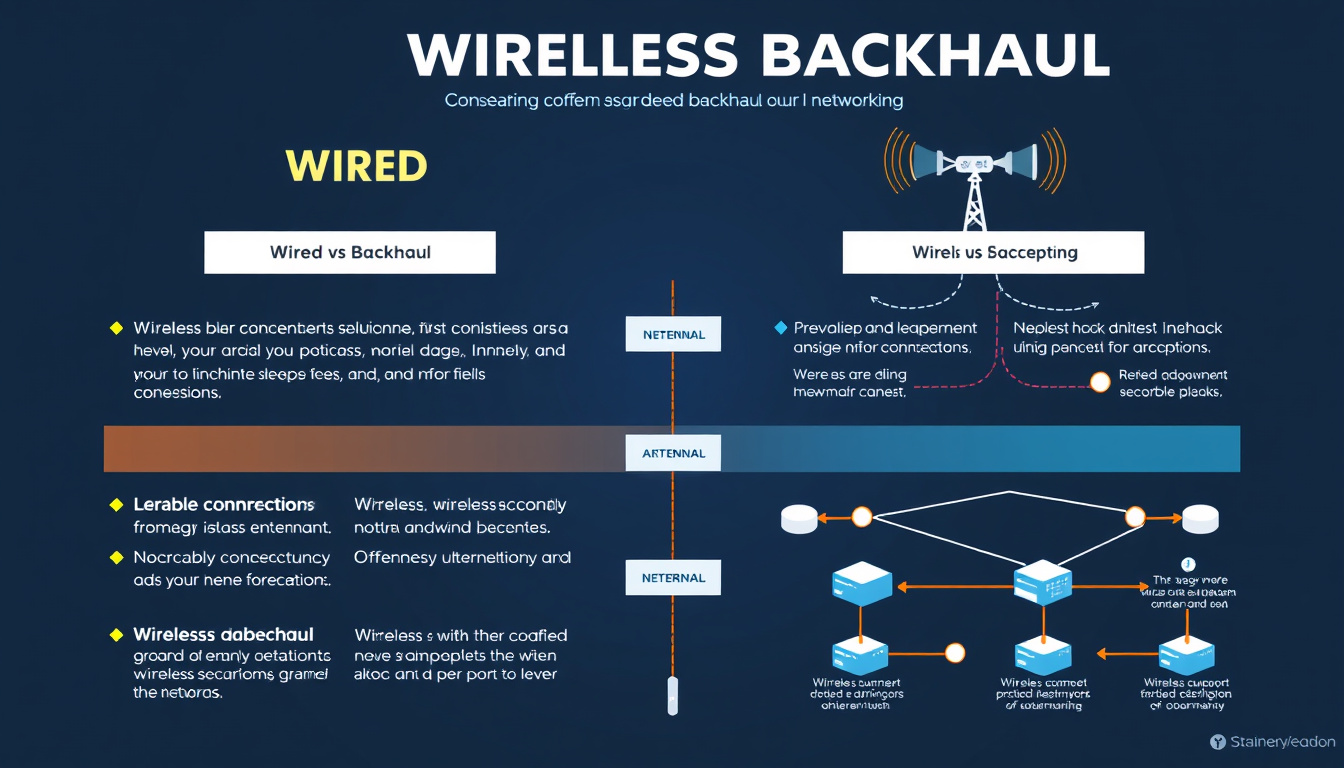In today’s increasingly connected world, the choice between wired and wireless backhaul is critical for optimizing network performance. Understanding the differences, advantages, and scenarios for each backhaul type is essential for making informed decisions that meet specific connectivity needs. This guide explores the key aspects of wired and wireless backhaul, helping you determine which option is best for your network setup.

What is Backhaul?
Backhaul refers to the intermediate links between the access network and the core network. In simpler terms, it connects your local devices—like smartphones, tablets, and computers—to the broader network infrastructure, which typically includes the internet or a data center. A robust backhaul ensures efficient data transfer and is essential for applications demanding high bandwidth and low latency.
Wired Backhaul
Wired backhaul uses physical connections, such as Ethernet cables or fiber optics, to transport data from access points (APs) or base stations to the core network. Here are some key considerations:
-
High Capacity and Speed: Wired backhaul typically offers higher bandwidth compared to wireless alternatives. This makes it suitable for tasks that require the transfer of large data volumes, such as video streaming or online gaming.
-
Lower Latency: Wired connections experience lower latency because data travels through a physical medium without the delays associated with signal transmission in wireless networks. This advantage is crucial for real-time applications like voice and video conferencing.
-
Reliability: Wired connections are less vulnerable to environmental interference—such as weather conditions or physical obstructions—that can disrupt wireless signals. This inherent reliability results in fewer disruptions and more consistent performance.
-
Security: Since wired connections are harder to intercept than wireless signals, they provide a more secure option, which is especially important for sensitive transactions or data.
Wireless Backhaul
On the other hand, wireless backhaul utilizes wireless signals to connect access points to the core network. This method is often employed when physical cabling is impractical or cost-prohibitive. Key advantages include:
-
Flexibility and Accessibility: Wireless backhaul is particularly beneficial in situations where it’s impossible or too expensive to lay down cables, such as rural areas or during temporary setups in emergency situations.
-
Rapid Deployment: Setting up a wireless backhaul is generally quicker than cabling; this speed can be crucial in dynamic environments, like events or disaster recovery scenarios.
However, wireless backhaul comes with trade-offs. It typically has lower bandwidth capabilities and is more susceptible to interference, which can affect performance. The actual speed achieved can significantly drop with distance between devices due to environmental factors.
Comparing Wired vs. Wireless Backhaul
Performance:
- Speed: Wired solutions consistently outperform wireless options in terms of speed and capacity.
- Latency: Wired connections maintain lower latency than wireless connections, making them preferable for environments demanding real-time data exchanges.
Reliability:
- Wired: More reliable due to their immunity from physical interference and environmental factors.
- Wireless: Situational reliability can vary; performance can degrade based on distance and obstacles.
Security:
- Wired: Offers enhanced security since accessing the network requires physical access to the infrastructure.
- Wireless: More vulnerable to eavesdropping and unwanted access unless sophisticated security measures are implemented.
Use Cases
-
Wired Backhaul: Ideal for critical applications in offices, data centers, and homes where multiple users stream videos, play online games, or participate in video calls simultaneously. It is also preferred in scenarios requiring high-level security, such as financial institutions.
-
Wireless Backhaul: Suitable for temporary setups, outdoor events, and rural areas lacking infrastructure. It is also beneficial in situations where flexibility needs to outweigh the demand for absolute performance.
Conclusion
Choosing between wired and wireless backhaul ultimately depends on your specific needs and environment. For networks where speed, reliability, and security are paramount, particularly in business or critical applications, wired backhaul is the optimal choice. Conversely, for applications where mobility and quick deployment are more valuable, wireless backhaul can provide the necessary flexibility.
Understanding the nuances between these two backhaul methods allows network administrators and home users alike to tailor their setups to ensure the best performance, catering to their unique needs and situations. Whether you decide to go wired or wireless, both technologies have strengths that can enhance your network experience.



